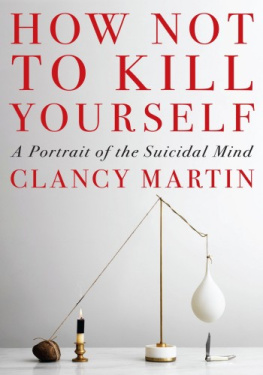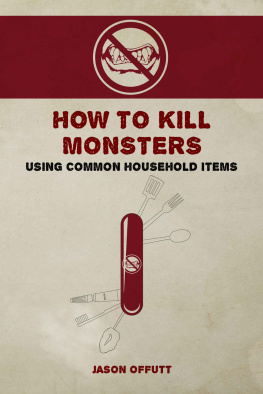
About You Bet Your Life
What are your chances of living through the next 24 hours? This week? This month? This decade? Will your job kill you? Your car kill you? Your spouse kill you? Given time, the odds are 100% against you. But the question is, exactly what odds do you face at any given time? Go you willeventuallybut how? And just how long can you put it off?
You Bet Your Life applies to you, the individual, the analytical approach insurance companies use to calculate risk: actuarial science. In blunt language and with all the key numbers, it offers data-based profiles of more than 1,000 ways to die, from the most common to the exquisitely bizarre.
The result is a painstakingly entertaining catalog of the real-world, real-life risk of losing your life in such situations as
An active shooter/mass killing scenario
A bad day in an automobile
A stinging encounter with bees, wasps, or hornets
A bout of brain cancer
An encounter with COVID-19 (in all its known variants)
A home drowning
Mortal combat with a flying champagne cork
An exchange with the police
Sexual activity
In nearly 200,000 words, more than 100 fascinating illustrations, and a wealth of illuminating tables and charts, you will find authoritative information from reliable sources on actual matters of life and death. Causes of death are quantified by age, geographic location, and other demographic factors, allowing you to understand your own personal risk profile. The research is thorough, cleansed of hype and politics, clearly explained, but not lacking in a delightfully dry dose of wry humor.
Each individual entry includes the data sources used to write it and a STAY SAFE takeaway to help you even the odds in your favor. At least for the time being.
About the Authors
Sheila Buff is the author of numerous books on consumer-oriented health and medicine, including national and Amazon best sellers. Her husband and coauthor, Joe Buff , is a recognized expert on risk. He holds an MS in mathematics from MIT and has been a Fellow of the Society of Actuaries (FSA) since 1980. After a long career on Wall Street and as a partner in a top 10 global management consulting firm, he created the best-selling USS Challenger future submarine warfare novels. Sheila and Joe live with their dog Daisy in the rural town of Milan in New York States beautiful midHudson Valley.
Praise for You Bet Your Life
You Bet Your Life starts with stats and seamlessly segues to everything you ever wanted to know about the risk of dying, with stunning breadth. This exploration from a science writer and an actuary includes familiar causes of death like cancer and COVID, as well as such predicaments as being struck by an asteroid, stuck in an exploding zeppelin and even succumbing to too much excitement watching a playoff game.
Ricki Lewis, PhD, geneticist and science writer, author of Human Genetics: Concepts and Applications and The Forever Fix: Gene Therapy and the Boy Who Saved It
As serious as cancer yet laugh-out-loud funny in places, You Bet Your Life is a complete compendium of the many ways we can die. This outstanding book helps you assess the risks of daily living and make the best choices.
Dr. Rob Silverman, Westchester Integrated Health
Informative and full of surprising facts and figures, You Bet Your Life explains your odds of death from all the usual causesand plenty of unusual ones as well. The revealing discussions and health and safety tips could save your life!
Steve Amoils, MD, and Sandi Amoils, MD, medical directors, AIM for Wellbeing
Want to live longer? Would you like to know how much risk you face in simply working, playing, traveling, going to school, and growing older? As an easily understandable guide for navigating lifes hazards, one can do no better.
Rick Severinghaus, CEO, CRTN Solutions

CONTENTS
Leading causes of death in the U.S. and worldwide; death rates by age, race, and state
BY JOE BUFF, MS, FSA
How to think about risk; a primer on probability and death statistics; data sources and data quality; key terms
Causes of Death
Medical events of sudden onset and brief duration, such as adverse drug reactions, intestinal obstruction, and pulmonary embolism
Conditions of longer duration, such as heart disease, cancer, and dementia
Disorders caused by bacteria, viruses, fungi, or parasites
The dangers of medical care (or lack thereof)
Various phenomena on the borderline of life and death, such as brain death, missing persons, and zombies
Rare phenomena such as death from fright or during sex
The dangers of drugs and alcohol
How air pollution and homelessness can contribute to deaths from natural causes
Natural disasters such as earthquakes, hurricanes, and volcanoes
Including by livestock, pets, and wild animals
Accidental deaths occurring in the home, such as from falls, poisoning, and house fires
The hazards of different modes of transport, including cars, trains, and airplanes
The hazards of various agricultural, manufacturing, service, and knowledge occupations
The hazards of sports and pastimes ranging from miniature golf to tackle football
The hazards of outdoor activities such as camping, hiking, and hunting
Dangers associated with law enforcement and the penal system
Deaths on the border; due to terrorism; and due to war
Murders examined by motive, means, and demographic factors
Fatal self-harm examined by motive, method, and demographic factors
The Starting Point: Baseline Data on Life and Death
T he information in this book is based on the most recent data available as of December 1, 2021, except for the COVID-19 section, which uses data available as of May 2, 2022. Because complex demographic data takes time to gather and analyze, most available US population statistics are from the period 2017 to 2020. The baseline data below is to give perspective on causes of death and death rates for the overall US population.
The Global Picture
Top 10 Worldwide Causes of Death, 2019
WORLDWIDE | HIGH-INCOME COUNTRIES | LOW-INCOME COUNTRIES |
| Ischemic heart disease | Ischemic heart disease | Neonatal conditions |
| Stroke | Alzheimer disease and other dementias | Lower respiratory infections |
| Chronic obstructive pulmonary disease (COPD | Stroke | Ischemic heart disease |
| Lower respiratory infections | Trachea, bronchus, lung cancers | Stroke |
| Neonatal conditions | Chronic obstructive pulmonary disease (COPD) | Diarrheal diseases |
| Trachea, bronchus, lung cancers | Lower respiratory infections | Malaria |
| Alzheimer disease and other dementias | Colon and rectum cancers | Road injury |
| Diarrheal diseases | Kidney disease | Tuberculosis |
| Diabetes | Hypertensive heart disease | HIV/AIDS |
| Kidney disease | Diabetes | Liver cirrhosis |
Next page














